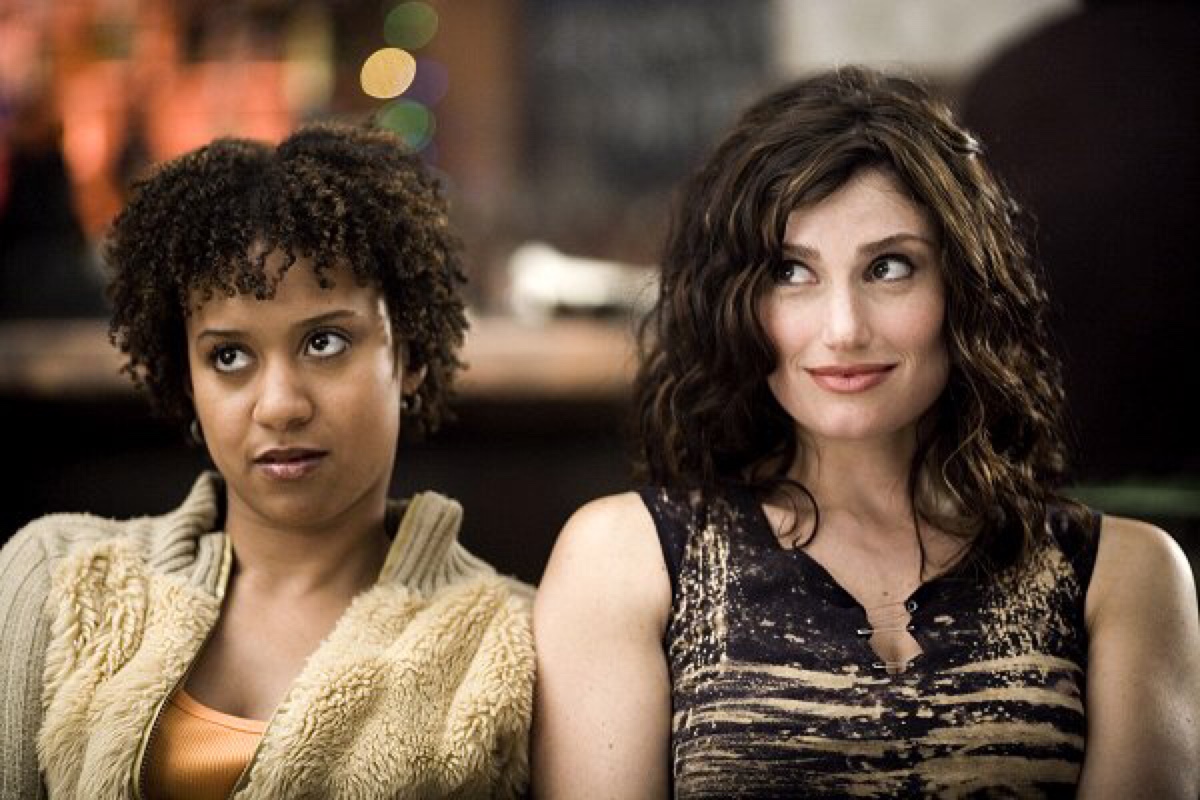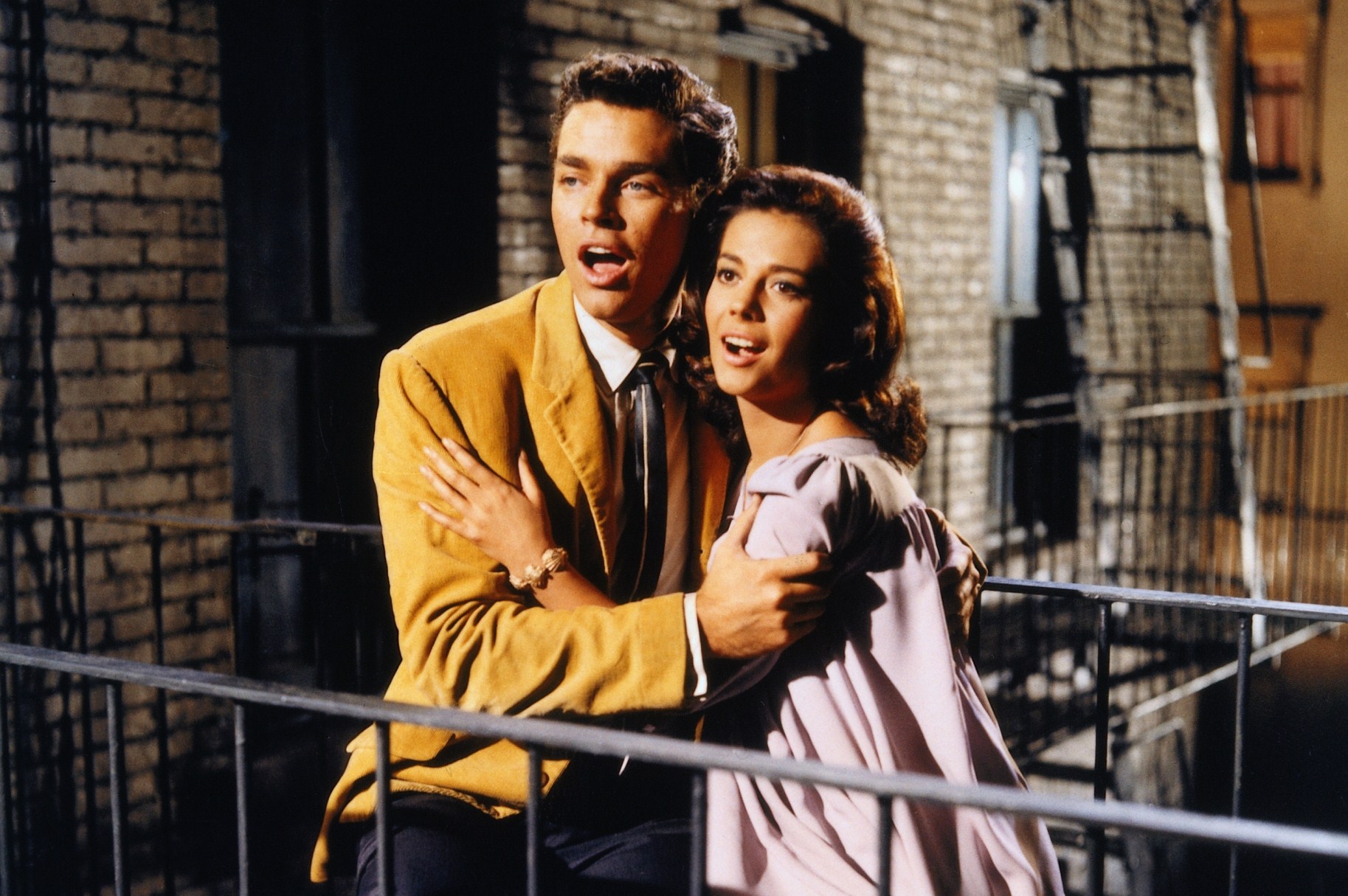This guest post written by Olivia Edmunds-Diez appears as part of our theme week on Bisexual Representation.
As an avid musical theatre fan, Rent is certainly in my top ten favorite musicals. I was first exposed to the musical through the 2005 film of the same name. From there, I quickly fell in love with the film’s soundtrack and then progressed to the original Broadway cast recording. The show’s music is infectious through its use of rock and more traditional Broadway stylings. I also adored the show’s diversity and attempts to tackle such controversial topics as HIV/AIDS, sexuality, identity, and poverty. But out of all the characters, I never really cared for Maureen, the show’s singular bisexual. Looking back, I think this is largely because she is not written as sympathetic and, as a straight teenager, I found it hard to relate to her voracious sexual appetite as depicted in the show. But Maureen is worth a second look, particularly at a time in which bisexual women and lesbians are routinely ignored, left out, and killed in television and film.
It is important to acknowledge that Maureen’s race is never specified in the show. Idina Menzel, a white performer, originated the role on Broadway and also played Maureen in the film version. Productions of Rent often replicate the racial casting of the original Broadway production. Maureen’s race is worth acknowledging because, as is often the case, when race is not specified, the default is white. This could certainly be viewed as bisexual erasure, particularly when it comes to bisexual people of color. Additionally, as Maureen is the only named bisexual character in the story, the audience is left wanting for bisexuals of color. And so although Rent gets representation right in many ways, bisexuals of color attending Rent, be it the stage show or the film adaptation, will not see themselves reflected in the show or on-screen.
Rent repeatedly comments on Maureen’s apparently untamed sexuality. In “Tango: Maureen,” Joanne (Tracie Thoms) wonders if Maureen became involved with other men while dating Mark (Anthony Rapp). Mark confirms these suspicions and Joanne also admits that Maureen cheated on her, suggesting that one person cannot satisfy Maureen’s sexual appetite — a common myth about bisexual people is that they cannot be monogamous. Later at their engagement party, Maureen and Joanne begin fighting about Joanne’s insecurities about their relationship, namely that Maureen was “promiscuous.” Naturally, this fight breaks out into song, but not before Joanne protests, “You were flirting with a woman in rubber,” prompting Maureen to shout, “There will always be women in rubber flirting with me!” Maureen reassures Joanne, singing, “You are the one I choose / Folks would kill to fill your shoes.” None of the characters seem to accept Maureen’s testimony, possibly because they assume she is unable to commit to any one person given her penchant for any and all persons. At the conclusion of “Take Me or Leave Me,” both women storm off, suggesting that their relationship is over. It is worth noting that in the film, we never officially learn if Maureen and Joanne reconnect and become a couple again. In the stage show, we see the duo reconnect shortly after in the song “Without You.”
The song “Tango: Maureen” bears further discussion. Maureen has no lines in the song that bears her name, suggesting that she is not allowed or able to discuss her own feelings and/or actions. With lyrics such as, “Feel like going insane? / Got a fire in your brain? / And you’re thinking of drinking gasoline?” referring to being in a relationship with Maureen, it is clear that Maureen is less than wonderful in a relationship. In the film, an elaborate dance sequence is inserted, with dozens of couples performing the tango, dressed in all black. All of the couples are paired heterosexually, which is curious for a film about LGBTQ characters. Additionally, Maureen is the only character dressed in red, quite obviously cuing to the audience that she is sexual, dangerous, and on the prowl. One difference between the stage show and the film is Maureen’s visual sexual relationships with men. The stage show does not show the audience any instances of Maureen and a man being intimate. But during the song “Tango: Maureen” in the film, the audience briefly sees Maureen kiss both a man and a woman before the trio walks off arm-in-arm. Whether this is to more overtly inform the audience that Maureen is bisexual or to affirm her enthusiasm for any kind of sexual activity, the audience will never know.
There are multiple jokes about Maureen’s new partner, Joanne. In the first of the show’s many overheard voicemails, Mark’s mom calls to wish him a Merry Christmas. But she ends with: “Oh, and Mark! We’re sorry to hear that Maureen dumped you. I say, ‘C’est la vie.’ So let her be a lesbian! There are other fishies in the sea. Love, mom!” Later that same day, Mark and Roger catch up with their friend, Benny, whom they haven’t seen in awhile. Benny asks if Mark and Maureen are still dating, and the following exchange occurs: “She’s got a new man?” “Well, no.” “What’s his name?” “Joanne.” Whether onstage or screen, these moments are played for laughs. We’re left feeling sorry for Mark for one of two reasons: either he couldn’t satisfy his woman so she became a lesbian, or Mark was so unaware he didn’t know he was dating a lesbian. Either way, these jokes inform the audience that Maureen is a lesbian, not bisexual.
It is worth emphasizing that Maureen is never labelled as bisexual throughout the show or film. Not only do the characters never refer to Maureen as bisexual, but Maureen herself does not give her sexual orientation a name. And this fact is poignant. Considering that it is only audiences and fans of the show/film that give Maureen this label, what happens when labels are applied to other people? Do the show and film contribute to bi erasure? Would Maureen even choose the bisexual label? Or might she opt for queer, questioning, pansexual, or lesbian? Might she eschew labels altogether? Perhaps we should take Maureen’s own words, and simply “take me for what I am.”
Olivia Edmunds-Diez is a Northwestern graduate, where she studied theatre and gender and sexuality studies. Her current favorite finds are The Two Faces of January, the Little Women cast recording, and The Blind Assassin. You can follow her on Instagram, Twitter, and Tumblr.










